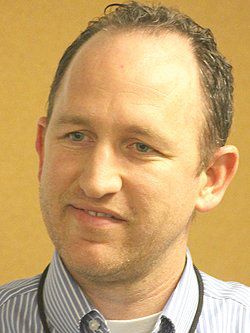The Local Emergency Planning Council heard from Joe Dougherty, Public Information Officer for the Utah Department of Public Safety Division of Emergency Management.
He said getting information out to the public has changed since social media has become more predominant in our society. Facebook, web pages and Twitter are widely used. As emergency planners he said you need to have someone assigned to update your web pages with the information you want the public to know.
It’s always good to have more than one person trained to do updates in case that person isn’t available during an emergency.
Gloria Wilson, representative from Huntington City said they have three administrators to do updates on their webpage and Facebook.
Dougherty said social media is so fast in getting information out, but sometimes the information out there isn’t accurate. It’s not just the young people that are using social media, the fastest growing segment on line is 55-65 year old females.
Youtube is the second largest search engine. Twenty-five percent of all Americans have watched a Youtube video.
“Statistically pretty much everyone is using it. Anyone with a smart phone can become a reporter and put it out immediately. After the super storm last year, pictures were posted that showed sharks swimming in the flood waters. This was fake. Everything you see isn’t real,” said Dougherty.
Sometimes in emergency situations the power is out and you can’t connect to the internet. Texting might still work. When you use Twitter it’s like you’re sending a text message to the world. Most media outlets follow Twitter. You can follow other accounts and then retweet their posts. FEMA can help get messages out concerning public safety.
Make sure the sources you are following are reliable. Some people make up fake accounts. Be Ready Utah is an official site and they put out messages. Right now they are advertising the April shake out for earthquake safety. Dougherty said social media is great for updates and people shouldn’t use 911 to ask for updates on certain situations. Only call 911 to save a life or stop a crime.
Dougherty gave the example of what happened with the Rhino Mine collapse in 2013. Jan Luke at the Emery County Sheriff’s Office contacted him to get updates out on that situation. “If you get an official report out you can tell your side of the story. People can see that the sheriff’s office is doing its job. We’ve had information posted on the rock slides and road closures in Huntington Canyon,” said Dougherty.
Dougherty told of the public information officer classes his department teaches and anyone interesting in taking them should contact him. Getting people trained to speak on camera and also to help getting the word out on social media is important.
Julie Johansen from Castle Dale City said before a storm they would like to get the word out to their citizens not to park on the streets so the snow plows can get through.
Brock Johansen from Emery Telcom spoke of media partners in helping get the word out to local people. The local media outlets have loyal followers and thousands of hits per month on their websites. These outlets are another tool the cities and county can use to get the word out. Websites can be updated instantly. Also the newspapers and websites can refer people to the official sites for information too. “In an emergency people need to know what’s going on. We can push the information and get it out there,” said Johansen.
Dougherty said the sheriff’s office site in Sanpete County increased it’s following tremendously by posting fire updates when they had the Wood Hollow fire. When the flooding occurred in Helper there were Tweets about it almost immediately. Assign someone to get the information to us. My number is 801-664-1530. jdougherty@utah.gov
The reverse 911 call can also be effective to get information out to the county. It was used recently to report a missing person and to ask if anyone had seen the person.
In other business Capt. Kyle Ekker said the emergency management document was approved by the county commission. The local cities can adopt this document as the management plan for their city. If a plan is in place if a disaster happens then the cities and county could be eligible for FEMA funding.
LEPC: Ideas for getting information out to the public

"Joe Dougherty the Public Information Officer for the Utah Department of Public Safety Division of Emergency Management speaks to the LEPC."
